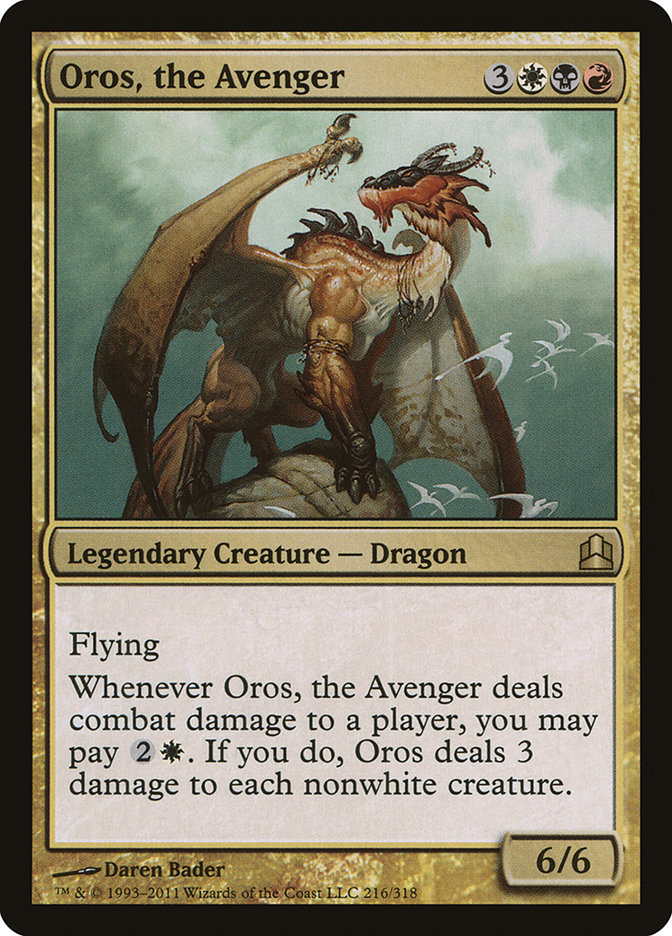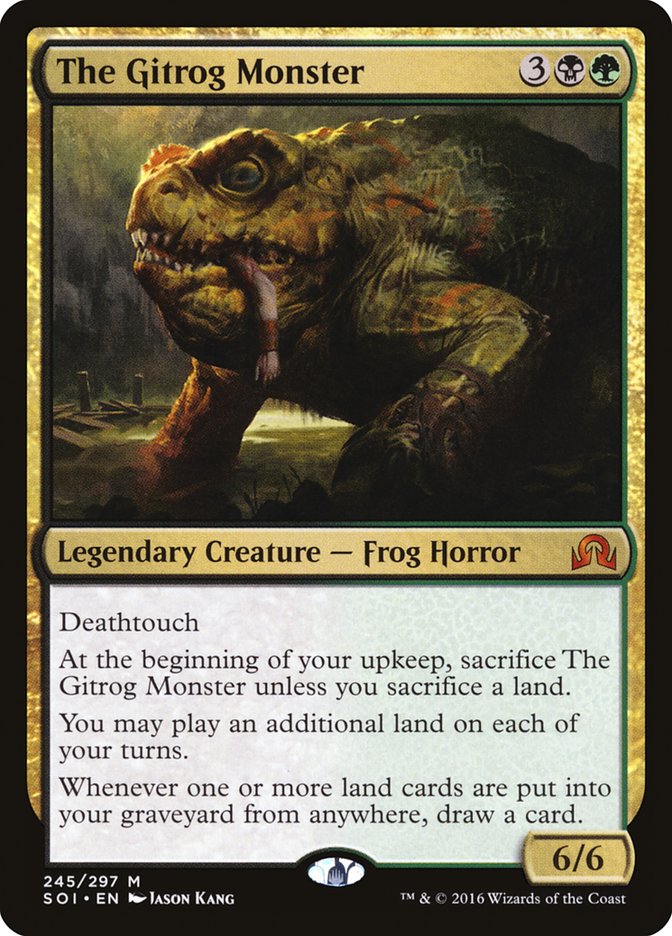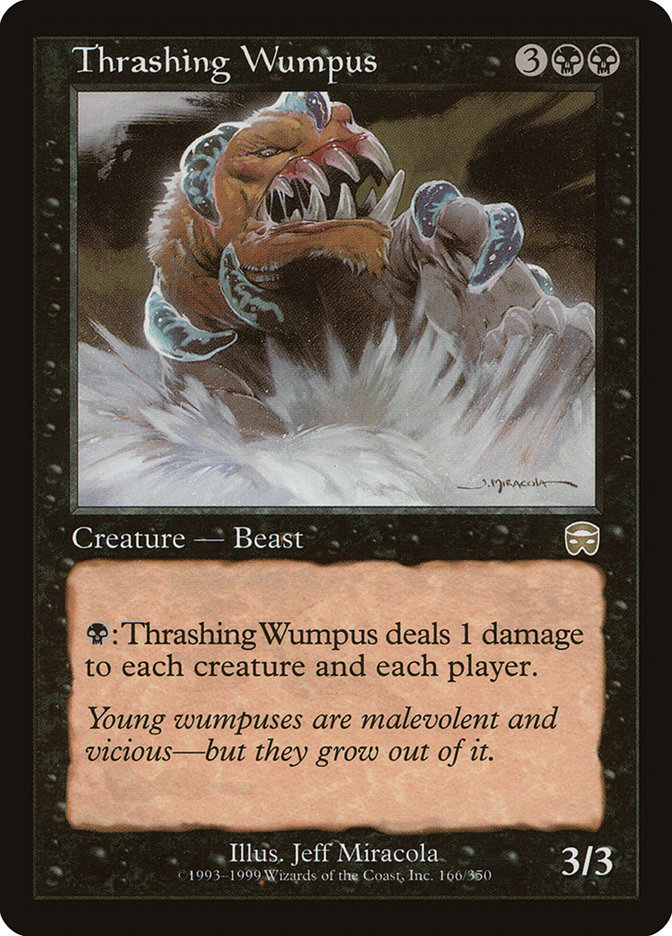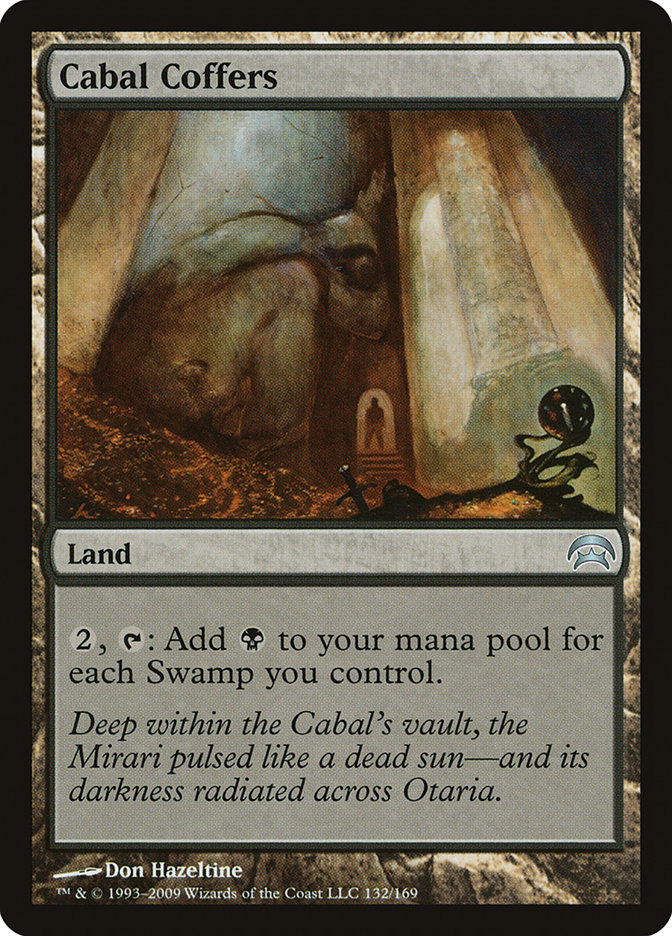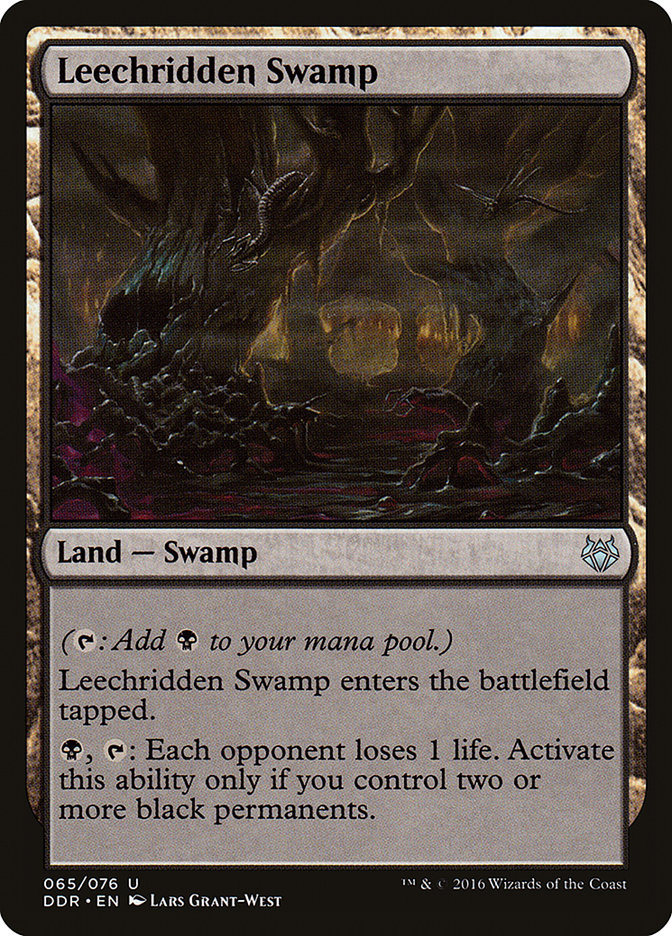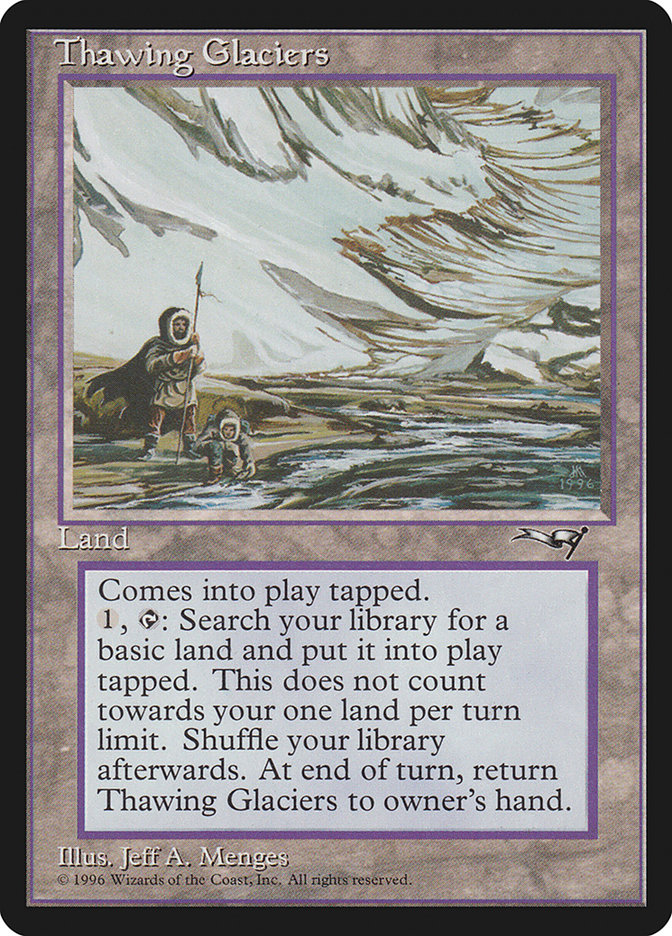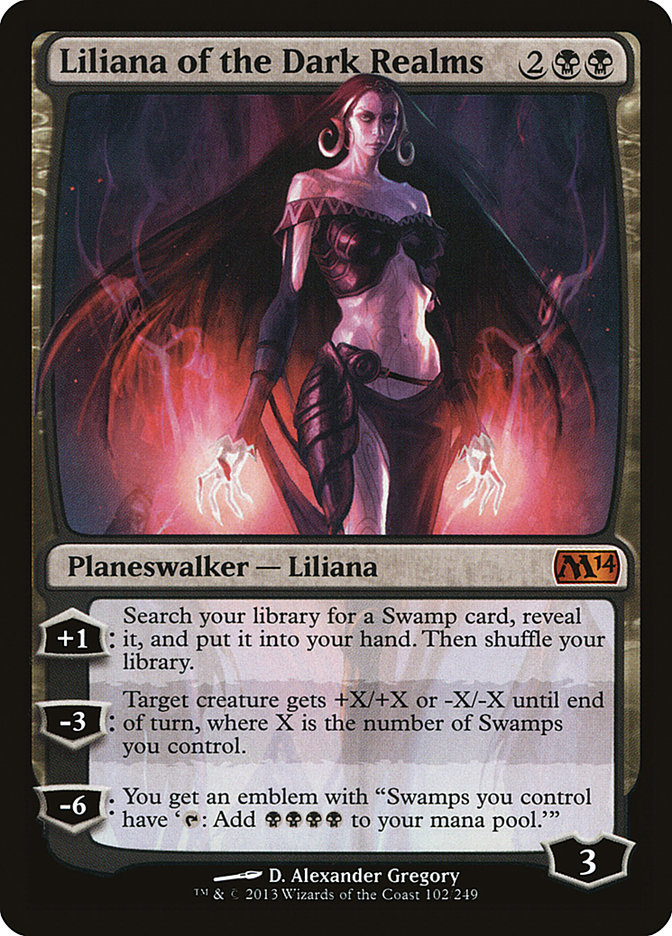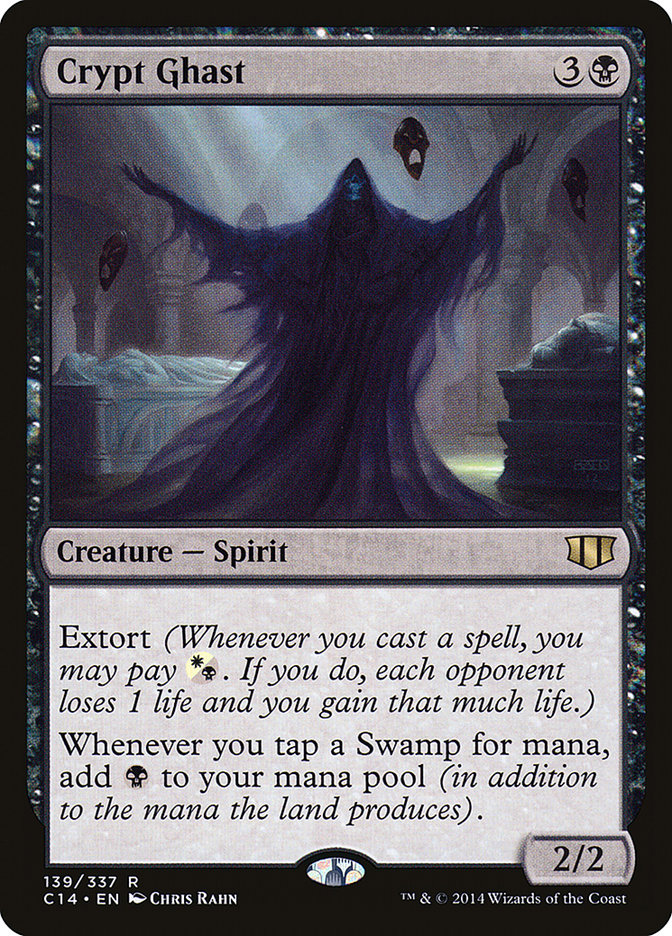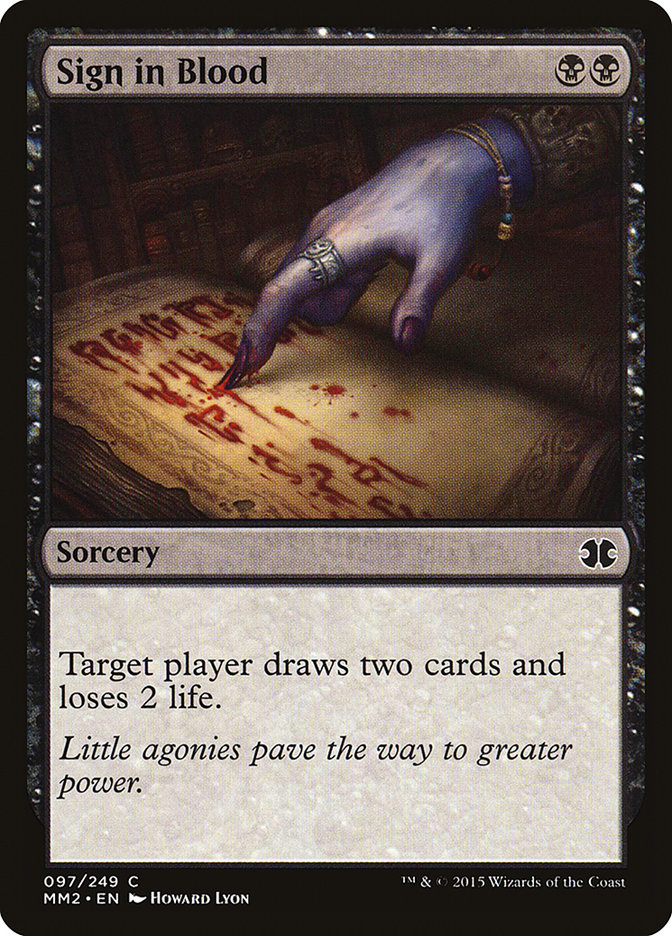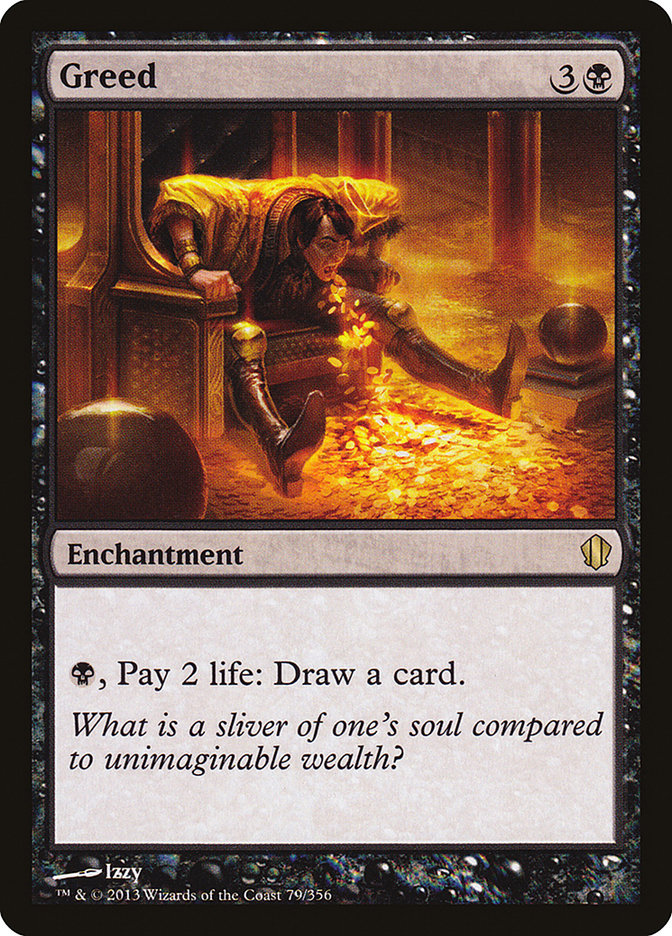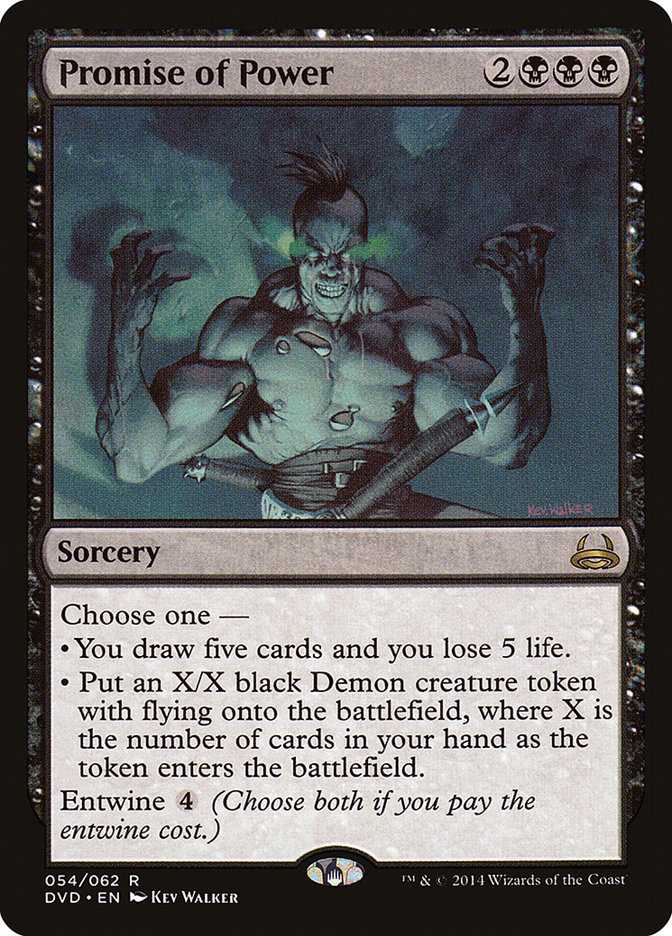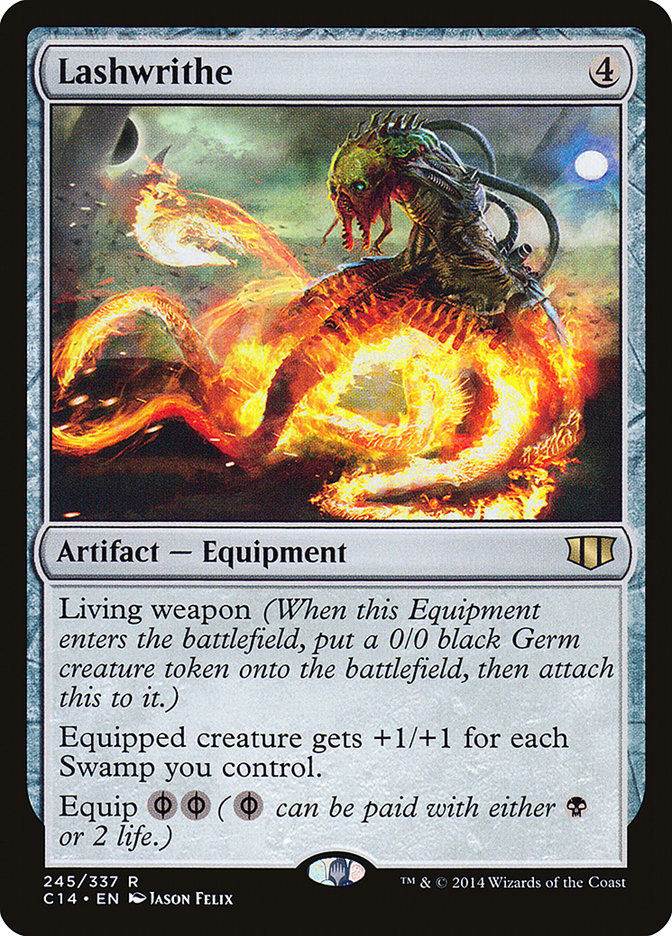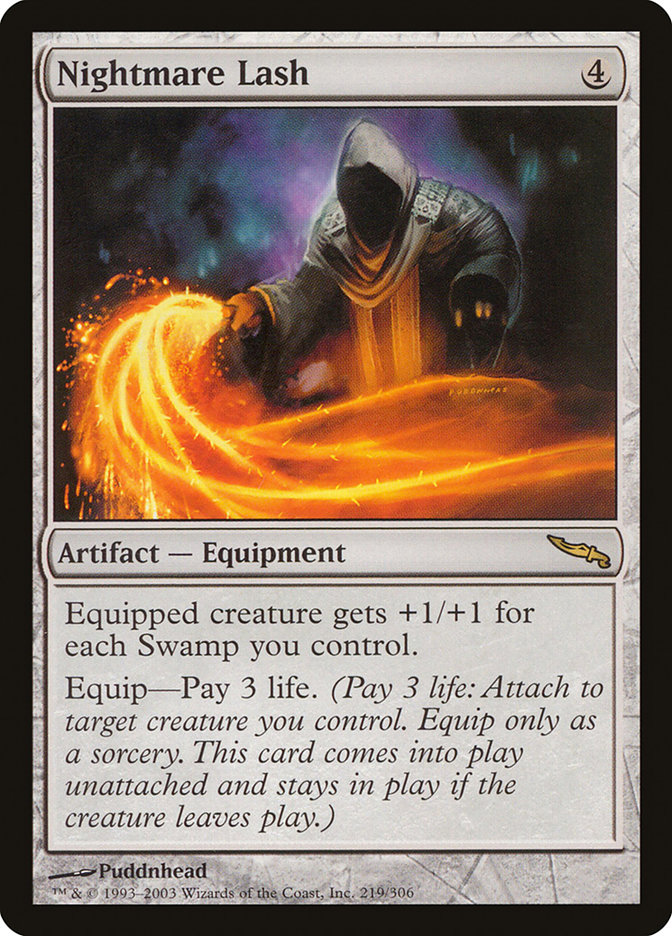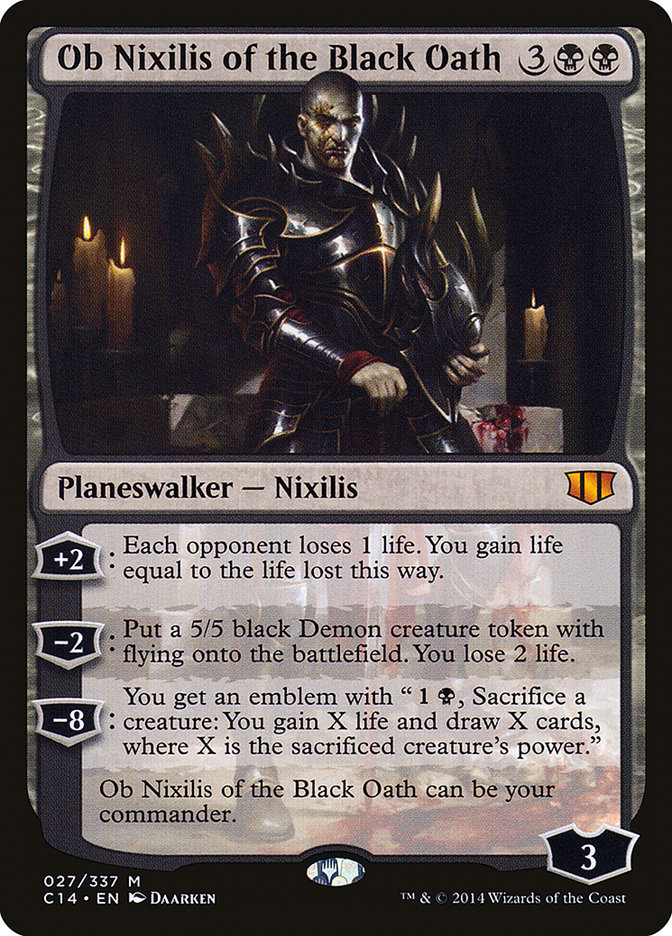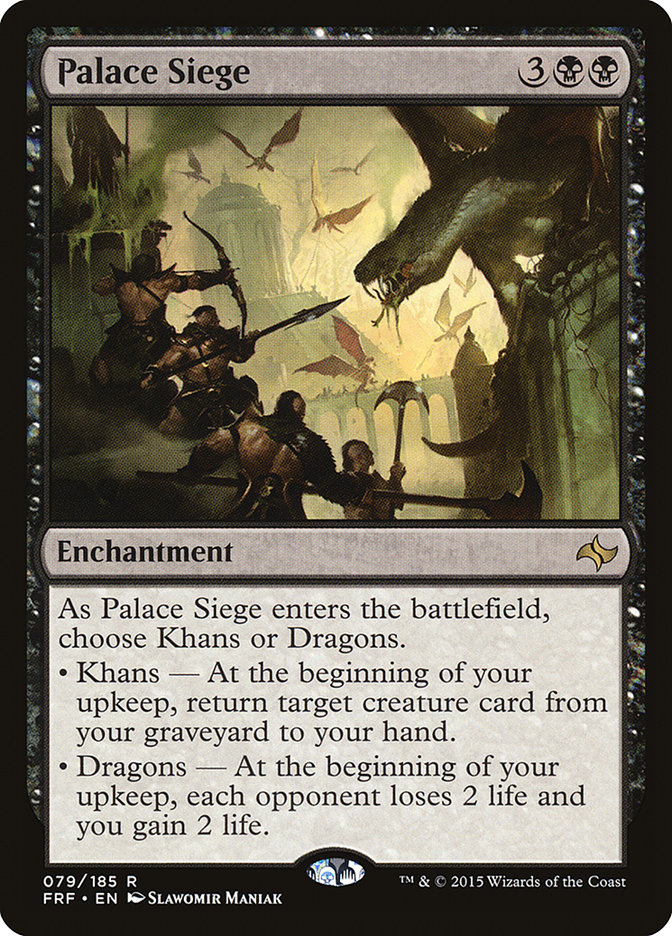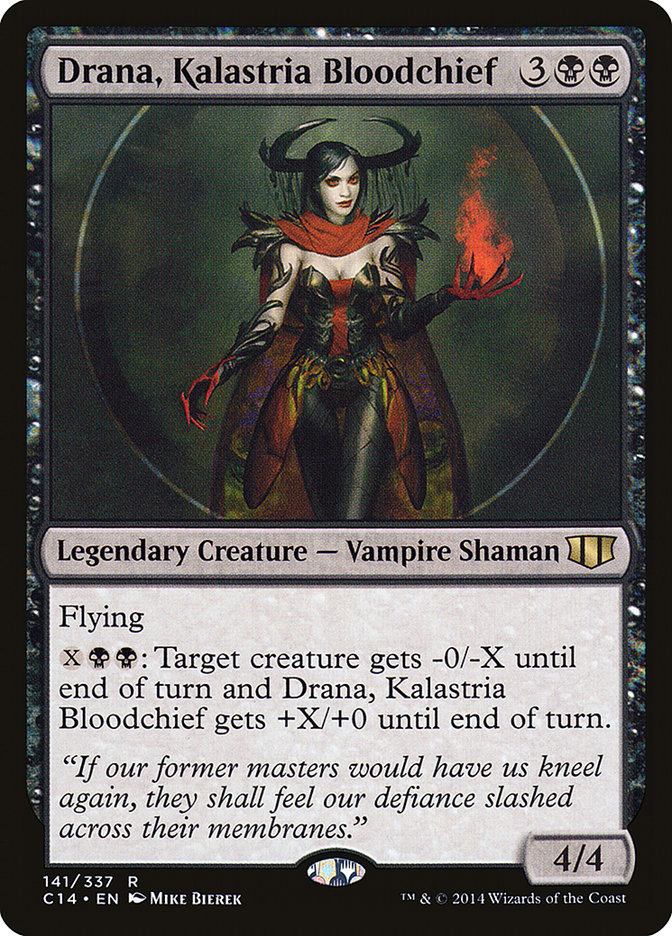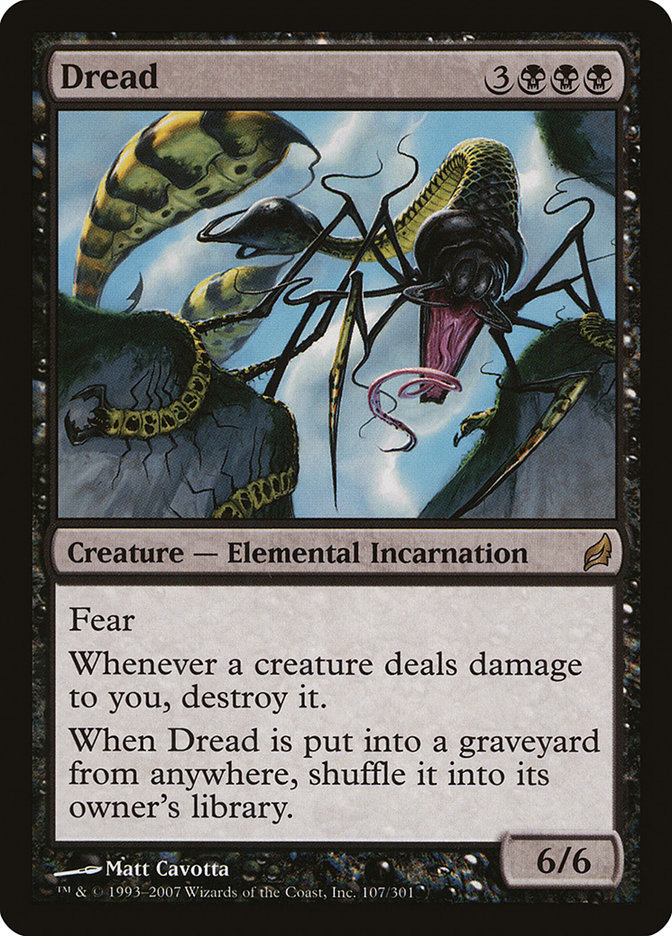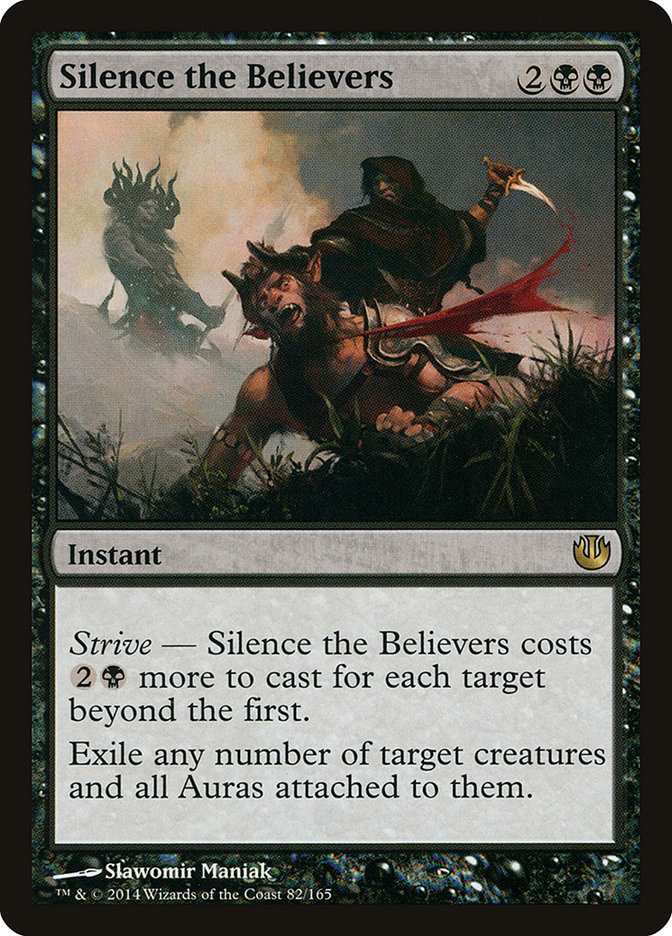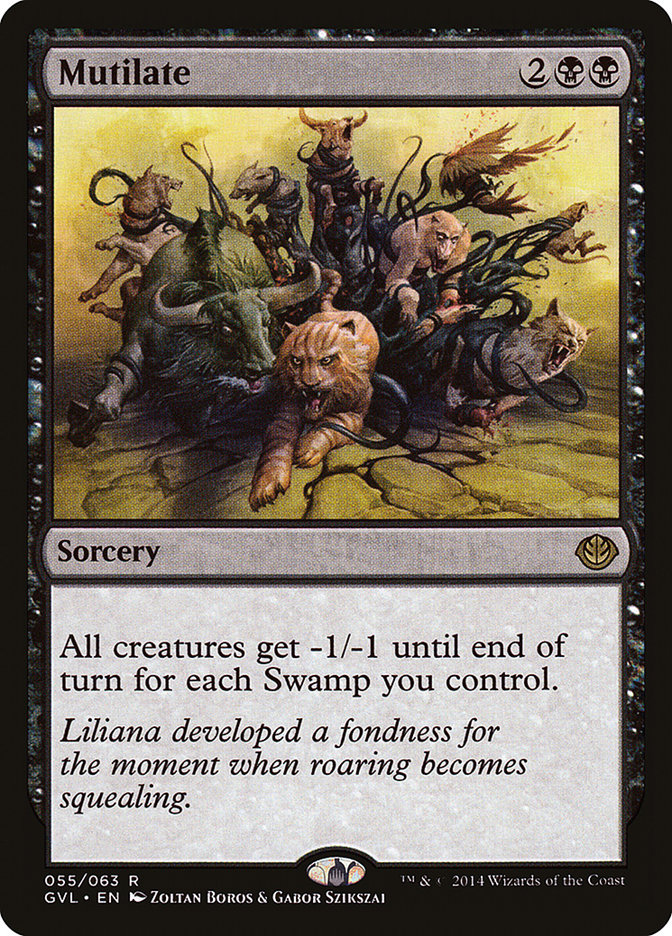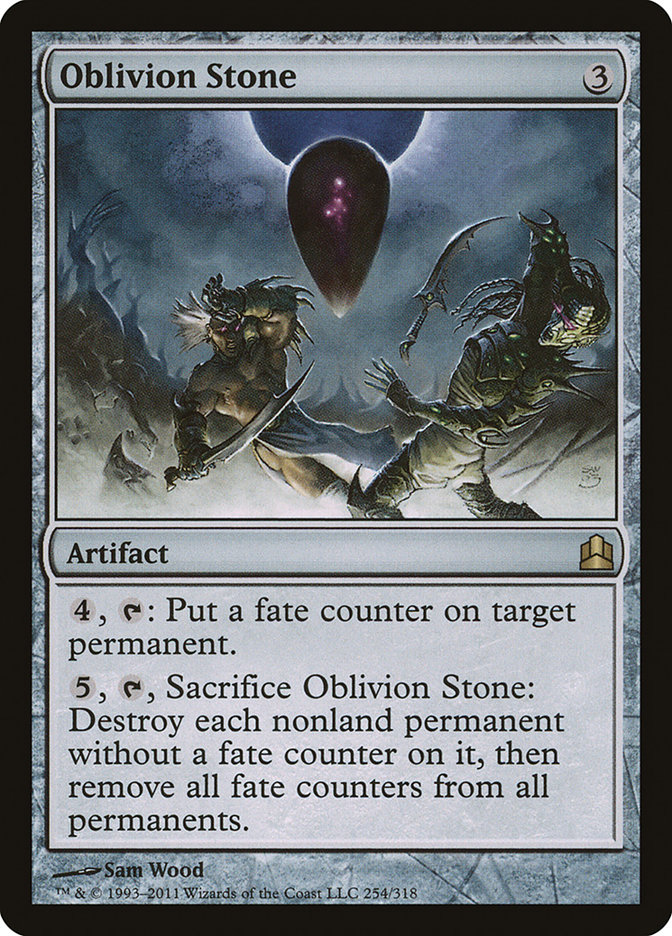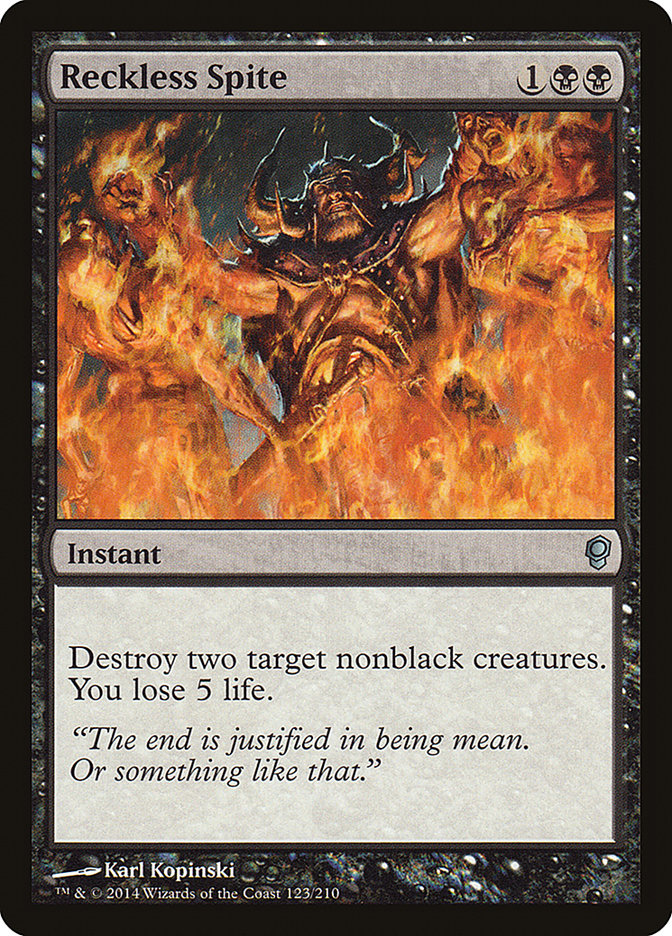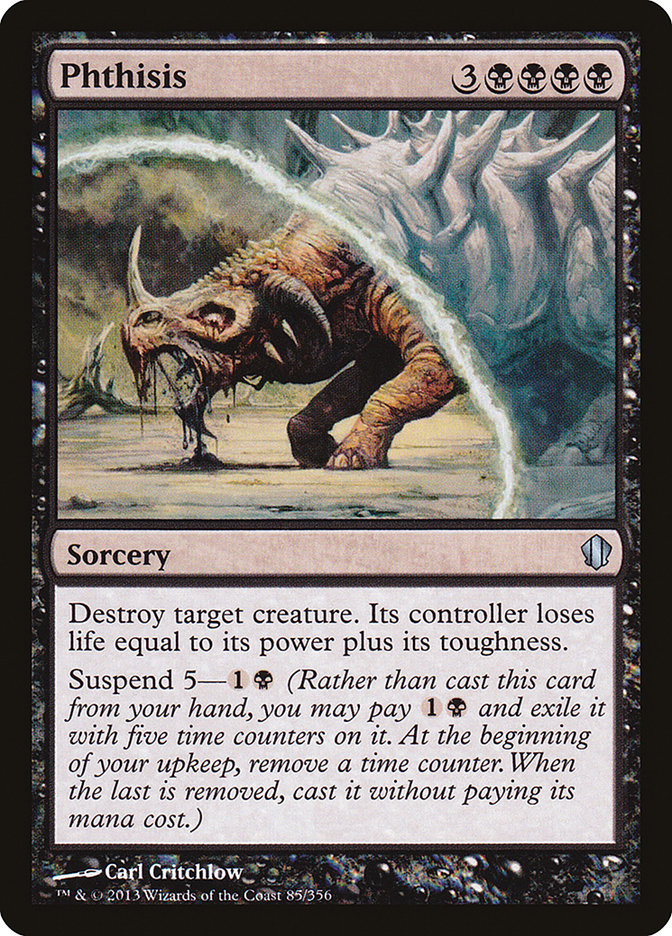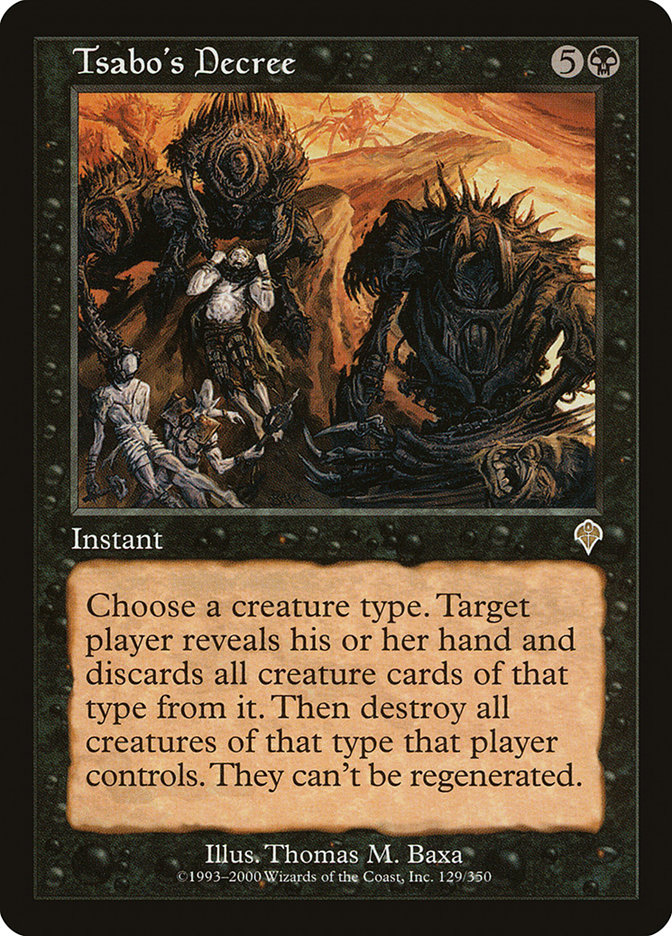The best events are when you feel comfortable. They may start off uncomfortable or awkward, but once you establish a rhythm, things get better. Races are like this; the best races are the ones that you feel good the whole run. You get tired, of course, but you focus on your stride, or your form. To do your best, you should be comfortable, and the things we enjoy best are usually when we are comfortable. Nice overlap, right? Think about some of your best memories. Most likely they were when you felt great. Commander games when you are nervous and feeling awkward are not the same as when you feel like a champion the whole time.
I am always advocating that you stretch yourself. For example, I lack aggressive decks in my Commander repertoire; I’m currently building Drana, Liberator of Malakir and Grenzo, Havoc Raiser to push my boundaries and improve at the game. But we aren’t always looking for constant improvement. Sometimes you just want to sit back, sip some coffee, and sling spells at your local game store. Or with your group at a kitchen table. Whatever makes you smile.
Casual Format, Casual Fun
Commander is a casual format first. This is a social game which promotes fun. The most obvious aspect of the casual stance is the shift in the game focus. For many, winning is a game objective, but it isn’t the goal of getting together with friends to play Commander. If we focus on having fun and ease up on winning, we can do a lot more.
We can play whatever we went, whatever we love. Even if your love is a prison deck. Just make sure you discuss game expectations. I don’t want to sit down with my $50 Lyzolda, the Blood Witch deck against a highly tuned Arcanis the Omnipotent combo deck, Kaalia of the Vast with mass land destruction, and an Azusa, Lost but Seeking super-mega-ramp deck. I’m not sure that is my game at all, but I do have some decks that could fight in that game. If I didn’t bring them, I’d explain I have nothing capable of hanging in that game. Maybe I could borrow a deck, or I’d walk away to find a game more my speed.
People question me on walking away from games, especially because I loathe when someone scoops from a game (it throws off game balance and pace, which often results in thrusting a player into an outstanding lead). If this format is fun first, I want to have fun. I value your time gaming, so I would rather walk away than not enjoy a game. This way the other players can enjoy their game without me bringing it down either.
Part of the casual fun is being comfortable with your deck. Do you want to sit back, play big green stompy critters, and laugh with your buddies? Go drop the hammer. My comfort zone is black decks. Or decks that are black and other colors: Oros, the Avenger; Damia, Sage of Stone; The Gitrog Monster; Lyzolda, the Blood Witch. I had other decks with black I retired, like Vish Kal, the Blood Arbiter, which was becoming too infamous at my LGS. My current mono-black deck is Kalitas, Traitor of Ghet. I love the options black decks offer.
We have card draw, we have sweepers, we have spot removal, we have tokens, we have life gain, we have life loss and some direct damage, we have graveyard hate, we have ramp and mana doublers. Everything we want, we have. As long as you pay the price. Like Dark Confidant says, Greatness, at any cost.
What Your Deck Says About You
I know that not everyone crafts their deck to match their personality. But deck choices matter. Card choices matter. Play decision matter. The decks that call to us indicate something about us. I’ve advocated threat assessment over political plays in the past, specifically Anthony Alongi’s stance that the most useful method of attempting to win a multiplayer game. Deploy your threats, attack the player who is your biggest threat to winning, and evaluate the battlefield every turn as things change.
My decks attempt to drive the pace of the game. I am most comfortable as the driving force in a Commander game. I am always keen to play a control deck against multiple opponents, but I feel most accomplished and impactful in the game when I force my opponents to deal with me or lose.
Kalitas, Traitor of Ghet is close to my ideal comfort zone for a deck. One of the best things about running Kalitas is that he passively puts pressure on my opponents. The graveyard-hating effect is far better than most people expect. There is a reason this card is seeing play in Modern and Standard. Kalitas stops recursion, provides extra bodies to attack or block, and gains life. His other effect of sacrificing a Zombie or a Vampire for two +1/+1 counters isn’t quite cheer-worthy in Commander, but this effect allows a Kalitas deck to take a Voltron path with barely any additional support needed.
The pressure Kalitas creates is not game-ending. Many opponents simply shrug at Kalitas’s effect. It is strong, but not going to get out of hand most times. But for every opponent playing Shu Yun, the Silent Tempest and not caring because of a low creature count, there is a Meren of Clan Nel Toth deck or Jarad, Golgari Lich Lord deck that is getting hosed. I’m okay hosing those decks; they need to work a little harder for their value.
Other black cards the deck runs add additional pressure to the table. Thrashing Wumpus can threaten a potentially catastrophic amount of damage, and you can say that you “wump the table;” if you do that without a smile, then I’m pretty certain you are a monster. Add in Cabal Coffers, Crypt Ghast, and a few other cards, and black decks have ramp potential that can rival green decks. Drana, Kalastria Bloodchief is another card that can win games if unopposed. Drana kills off opposing creatures while attacking for huge amounts of damage. When she works with Kalitas (flavor fail, but card quality win), opposing creatures are killed and exiled, tokens are created, and the path is clear for a lot of damage. Life is good with Drana around. The best part? If she is immediately removed, then it leaves Kalitas in the clear to keep pressuring opponents.
Commander Kalitas
Creatures (15)
- 1 Royal Assassin
- 1 Seizan, Perverter of Truth
- 1 Thrashing Wumpus
- 1 Filth
- 1 Dread
- 1 Fleshbag Marauder
- 1 Drana, Kalastria Bloodchief
- 1 Massacre Wurm
- 1 Sheoldred, Whispering One
- 1 Slum Reaper
- 1 Crypt Ghast
- 1 Erebos, God of the Dead
- 1 Burnished Hart
- 1 Demon of Wailing Agonies
- 1 Merciless Executioner
Planeswalkers (3)
Lands (37)
Spells (44)
- 1 Sol Ring
- 1 Greed
- 1 Fellwar Stone
- 1 Mutilate
- 1 Decree of Pain
- 1 Night's Whisper
- 1 Promise of Power
- 1 Oblivion Stone
- 1 Lightning Greaves
- 1 Phyrexian Arena
- 1 Wayfarer's Bauble
- 1 Nightmare Lash
- 1 Barter in Blood
- 1 Charcoal Diamond
- 1 Mind Stone
- 1 Reckless Spite
- 1 Phyrexian Reclamation
- 1 Seal of Doom
- 1 Tsabo's Decree
- 1 Phthisis
- 1 Bitterblossom
- 1 Sign in Blood
- 1 Exsanguinate
- 1 Lashwrithe
- 1 Syphon Flesh
- 1 Champion's Helm
- 1 Swiftfoot Boots
- 1 Army of the Damned
- 1 Sever the Bloodline
- 1 Tribute to Hunger
- 1 Read the Bones
- 1 Hero's Downfall
- 1 Silence the Believers
- 1 Reign of the Pit
- 1 Unstable Obelisk
- 1 Commander's Sphere
- 1 Palace Siege
- 1 Damnable Pact
- 1 Scour from Existence
- 1 Vampiric Rites
- 1 Deadly Tempest
- 1 Thought Vessel
- 1 Wretched Confluence
- 1 Succumb to Temptation

The Manabase
I wanted a deck that’s powerful yet straightforward. To maximize that effect, I didn’t want to think about my manabase. Cabal Coffers just made sense because I was playing Swamps. A lot of Swamps. The deck can always use the mana for spells. A full 28 Swamps from Onslaught help power up the Cabal Coffers; I don’t even need Urborg, Tomb of Yawgmoth. Onslaught has my favorite basic lands, so I used them for this deck.
Terramorphic Expanse, Evolving Wilds, and Thawing Glaciers help me fetch lands to the battlefield. I can also pretend I’m thinning my deck with the couple of shuffles they provide. I probably should cut the Expanse and Wilds for two more Swamps. I added Polluted Mire and Barren Moor for the potential flooding; just cycle them away for a new card. Mystifying Maze is a catch-all for some problems I face.
The last two lands are the ones that offer fun effects. Leechridden Swamp can drain my opponents for some life. The card doesn’t do a whole lot at once, but across a game, four or five life kills. Shizo, Death’s Storehouse helps me attack past blockers and assists my Voltron enemies in taking down another opponent.
Mana rocks are important to get Kalitas out early and to continue the pressure. I mixed in some I had lying around and others that I enjoy. Mind Stone is great and a personal favorite because I can cash it in for a card later. Liliana of the Dark Realms can find a Swamp so that I don’t miss land drops. If she ever manages to ultimate, then those Swamps tap to generate four mana per Swamp; at that point, even Damnable Pact is a viable kill spell. Crypt Ghast is a mana doubler that I love because extort is formidable in Commander, yet opponents never take it seriously. They take the Crypt Ghast seriously because it doubles mana, but extort is frequently overlooked. This deck has eleven dedicated ramp cards. That number is a little low, but I have a lot of card drawing in the deck and Kalitas, Traitor of Ghet is only four mana.
Card Drawing
I’ve said it a lot: I love drawing cards. Black provides card drawing in spades, if you are willing to pay the price. Under normal circumstances, that becomes a strategic choice. In Commander the decision is easy. You pay the life and draw the cards. Card advantage is more important than your life total in almost all circumstances.
The basic card drawing spells are Sign in Blood, Night’s Whisper, Succumb to Temptation, and Read the Bones. You draw two cards and lose two life. For three mana you can scry two or cast the spell at instant speed. Simple and clean.
Permanents offer more frequent methods to draw extra cards. Phyrexian Arena is the poster child of extra cards. It can easily draw you an extra five to seven cards before it’s destroyed. Vampiric Rites ties the card drawing to sacrificing a creature. Kalitas, Traitor of Ghet helps with tokens to sacrifice when the deck is rolling. When an opponent tries to target a creature, Vampiric Rites turns the creature into a boost in life and a new card.
Greed is a very repeatable source of cards. While I definitely value cards more than life points, Greed can certainly lead to an early demise if I’m too greedy with the cards. It’s like Wizards knew players would gamble with this card. Erebos, God of the Dead has a similar function; it also shuts down opponents’ lifegain, is incredibly hard to remove, and occasionally turns into a 5/7.
The five-mana range is where card drawing gets sweet. Promise of Power is a reload spell early and in the late-game it provides a nice flying Demon. Seizan, Perverter of Truth is very well-sized for five mana and puts the whole table on a clock. With two extra cards and the life totals chipping away, Seizan demands action. It is technically card disadvantage, but it is a pet card since high school and this deck is my best place for it.
Ob Nixilis Reignited is a card-drawing Swiss Army Knife. I have never used his ultimate, but the second effect is beyond useful in a multiplayer game. There is always a good target if the card is unneeded. Otherwise, he functions as a pseudo-Fog for each creature that attacks him instead of my life total. Wretched Confluence is another versatile card with instant speed card draw, Raise Dead, or killing small to medium creatures. The ability to pick modes in triplicate is fantastic. I would love to see more of these cards in the next Commander precons.
The final card drawing spell is Damnable Pact. This card is sometimes a huge draw spell, sometimes a draw spell on curve (if a little inefficient), and sometimes a kill spell. Target the player at twelve life and roast them out of the game. I enjoy versatility and the ability to help myself or kill an opponent with the same card.
Suit Up
Kalitas, Traitor of Ghet is an excellent card, but in Commander he is still a little small. To help this I added cards to boost him into the stratosphere, Nightmare Lash and Lashwrithe. Champion’s Helm is actually more useful because it is not destroyed as often, but connecting with Kalitas holding both Lash Equipment is spectacular in ways I cannot express.
I threw in two staple cards to protect my commander. Swiftfoot Boots and Lightning Greaves are a bit boring to write about, but I’ll take boring cards that do their job well when I just want to have fun slinging my spells. I have other decks to be creative; this one is about doing things I love in the game.
Utility
Batman has his utility belt. So should Commander decks. The utility in Kalitas is a tad light, but it’s worth it to play more fun stuff. Phyrexian Reclamation is handy for dodging the commander tax with Kalitas by letting him die, and it recurs creatures like Fleshbag Marauder or bigger creatures late-game. Not creative, but useful.
Bitterblosson is another utility card for playing defense. Sure I take one point a turn, but blocking Dragons matters. Plus, the Faerie creatures can attack, even if I don’t usually amass enough for a strong attack. But even a 1/1 holding a Lashwrithe can be scary. Palace Siege is almost always set to Dragons, since I want to drain everyone and gain back life. I pay a lot of life across my cards and need to get some back. Palace Siege is here to help. Ob Nixilis of the Black Oath does a similar job, but with the chance of making a 5/5 Demon token too. I have never ultimated either Nixilis planeswalker, but they earn their spots.
Under Pressure
Now we can talk about fun cards again. Kalitas does a fantastic job on his own but sometimes needs help pressuring my opponents. Filth does little on the battlefield, but if it is in the graveyard, all my creatures have swampwalk. I rely on my opponents to play Urborg, Tomb of Yawgmoth. Then I can attack anyone without worries. Even without Urborg helping, my LGS has many decks that run black. Filth is most useful when it’s in the graveyard and I take someone down with commander damage.
Demon of Wailing Agonies attacks through the air and is aggressively costed if Kalitas is out. Fortunately, they curve beautifully. Making an opponent sacrifice a creature helps Kalitas make more Zombie tokens and exile their dead critters. I already talked about Drana. She does a little bit of everything. Killing tokens with her is inefficient, but I’ll take it.
Thrashing Wumpus is my favorite card in the deck. You can activate it to “wump the table.” Just try doing that without smiling. This Beast functions like a Pestilence. If you wump the table more than three times, it will die. But I can hold priority and stack the triggers or equip it with Nightmare Lash to attack for a lot and finish people off with the effect. Most times, I use the Wumpus to clear the field of tokens and utility creatures. The most fun times are when I activate it for ten or more to take out a player or two.
Putting pressure on your opponents forces them to react. If an opponent has a creature-based deck, I can expect attacks. Dread helps with defense and offense. When I get Dread out, I have a No Mercy effect to serve as a rattlesnake. Stay away, opponents, or you lose that creature! But even better than just keeping creatures away, Dread has fear and can attack past any nonblack, nonartifact creatures. If it goes to the graveyard, it shuffles back where I can hope to draw it again. People usually underestimate this card. Let them! It does a lot more than people expect.
My final two cards that put my opponents under pressure are Sheoldred, Whispering One and Army of the Damned. Sheoldred is a phenomenal card to gain advantage. Every opponent sacrifices a creature on their upkeep, and then I get to recur a creature on my upkeep. Sometimes it is a Fleshbag Marauder-type creature; other times I get back a big creature like Drana to finish the game. Army of the Damned doesn’t put the pain to my opponents in the same way, but having thirteen 2/2 Zombies is a lot of damage against opponents. Most opponents will forget Flashback; don’t be one of them.
Removing Problems
Black has an outstanding selection of removal spells for Commander. We are not running cards like Grasp of Darkness and hoping to kill a creature. We can play Reckless Spite and take down two creatures, or we can recur Fleshbag Marauder to force our opponents to sacrifice their battlefield presence. We have options.
My first tip for removal in a black deck is to run exile effects. Kalitas loves seeing opposing creatures try to go to the graveyard, but Avacyn, Angel of Hope and Ulamog, the Ceaseless Hunger exist. My preferences are Silence the Believers and Oblivion Strike. Silence the Believers can target several creatures, exiling them at instant speed. I recommend more players look at Oblivion Strike over Gild because of devoid. Protection from black is a real effect that ruins days, but Oblivion Strike is like a honey badger. It doesn’t care.
My second tip for removal in a black deck is to run some mass removal spells that do not include the word “destroy.” Mutilate is a personal favorite. At least it is when I cast it. This card scales to take down Eldrazi for only four mana. Mass sacrifice works wonderfully too. Adjust if Sigarda, Host of Herons and Tajuru Preserver are showing up at your tables.
My third tip for removal in a black deck is to use something to target noncreatures. Black is excellent at killing creatures. Black is awful at removing enchantments. Scour from Existence is expensive, but highly useful. Oblivion Stone is another of my preferences, but the financial cost on this is high. Nevinyrral’s Disk is more affordable but slower. Unstable Obelisk is making its way into many of my decks for its utility: mana rock early, all-around removal later.
My final tip for removal in a black deck is to have fun. There is enough quality instant-speed removal that even a Toshiro Umezawa deck needs to make cuts. I love Reckless Spite as a two-for-one. Phthisis is hilarious. I dealt sixteen damage to my friend when I hit Divinity of Pride with Phthisis. I don’t recommend suspending it, but doing so can keep big creatures off the battlefield for several turns. Massacre Wurm in this deck is good but not amazing, since Kalitas ruins part of it. However, most often the card functionally reads “each player running a token deck loses the game,” and I like that kind of effect for six mana. I also think more players should take a look at Tsabo’s Decree, since it dodges hexproof and shroud by targeting the player.
Returning to Comfort
This deck works well. It is effective and powerful at my tables. However, it is not exactly creative. And that is okay. I often decry staples on Twitter and at my LGS, but sometimes we all need a break and just want to sit back and sling spells. Having fun is the goal. That fun can be achieved with a great game using good decks. Or it can be with a deck like Dromoka, the Eternal leading an army of paired functional reprints. If you have some really fun and creative decks, maybe you should relax and just have some fun playing your deck. Not everything needs to be super themed like Ramirez DePietro Pirates and Sea Monsters or jump through as many hoops as my Glissa Sunseeker deck.
What is your Commander Comfort Zone? Do you often return to your comfort zone? Or do you keep pushing your limits to build new and exciting decks?


